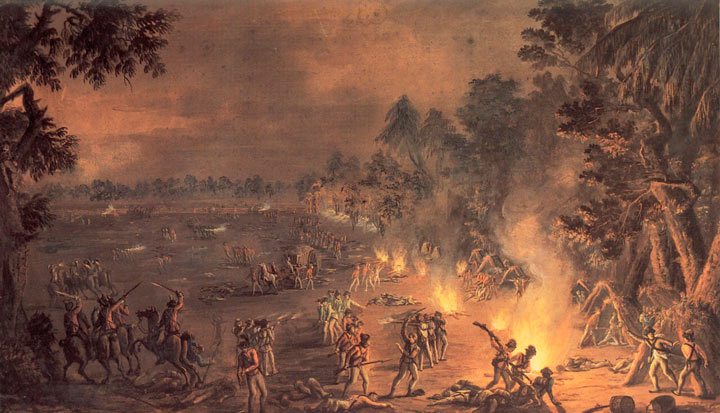 The Battle of Paoli, also known as the “Paoli Massacre,” was a very small, cruel battle fought as part of the Philadelphia Campaign in the American Revolution. At midnight on September 20-21, 1777, close by to the Paoli Tavern, British commander Major General Charles Grey launched a surprise attack on Brigadier General “Mad” Anthony Wayne’s Pennsylvania Division.
The Battle of Paoli, also known as the “Paoli Massacre,” was a very small, cruel battle fought as part of the Philadelphia Campaign in the American Revolution. At midnight on September 20-21, 1777, close by to the Paoli Tavern, British commander Major General Charles Grey launched a surprise attack on Brigadier General “Mad” Anthony Wayne’s Pennsylvania Division.
Wayne had been under orders from Major General George Washington to harass the British and to capture all or part of their baggage train. He mistakenly assumed the British did not know he was following them and he camped close to the British lines. His entire brigade numbered some 1200 men, many inexperienced youngsters.
The British Ambush
Meanwhile, Major General Grey took steps not to alert the Americans and removed the flints from his men’s muskets. The British forced a local blacksmith to act as a guide and launched a surprise attack on Wayne’s camp. They stormed in and with extremely light casualties of four dead and seven wounded, routed an entire American division leaving American casualties numbering 272 men killed, wounded, or missing. Seventy-one prisoners were taken, but forty of them were so badly wounded they were left in nearby houses.
Wayne was subjected to an official inquiry that was in favor of Wayne and declared he had made a tactical error and not committed an act of misconduct in allowing the attack to happen. Wayne was incensed by this ruling and demanded a full court martial be held. This enquiry declared he had acted with honor.
The propaganda machine rumored the British had stabbed or burned Americans who surrendered and this is why the battle was given the name of “the Paoli Massacre.” However, history shows that these accusations were false by the fact that many prisoners were taken. The bayonet was a vicious weapon and the severity of injuries gave rise to the inflammatory term “mangled dead.”